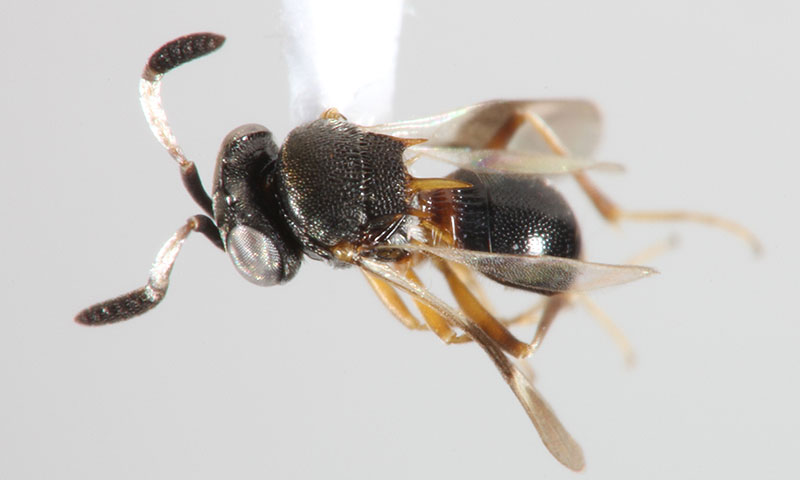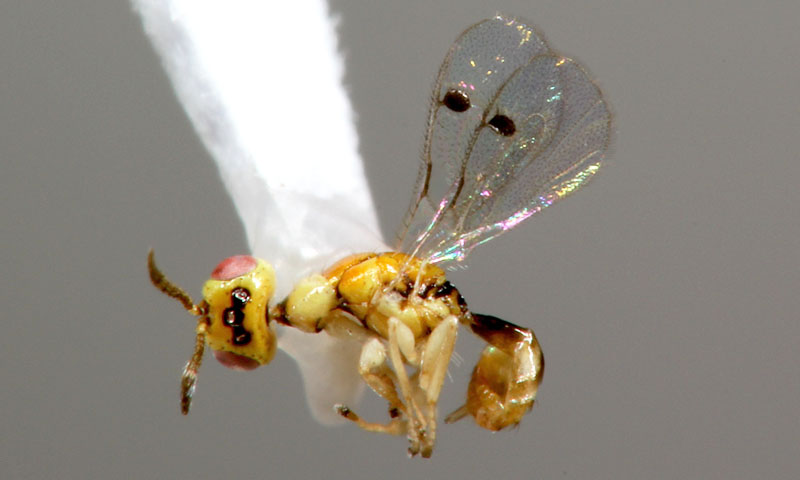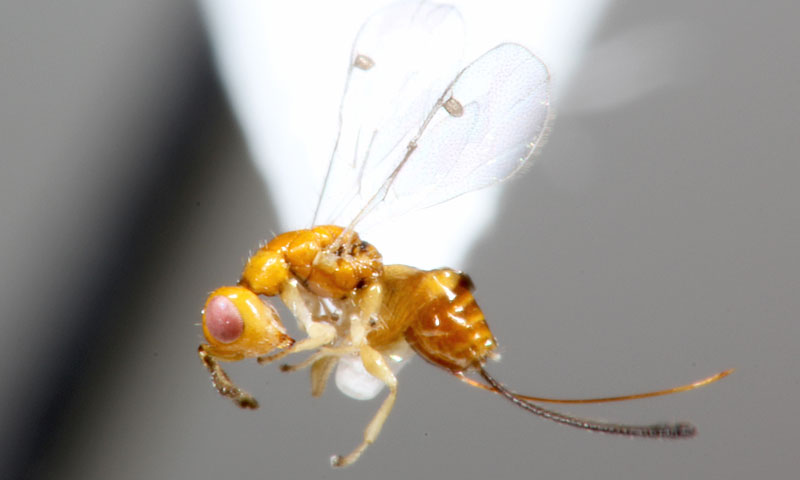In our own backyard
4 May 2016 – Two recently published papers resulting from collaborative research between the International Centre of Insect Physiology and Ecology (icipe), Nairobi, Kenya, and colleagues from France and the United States of America (USA), show that exploring for new insect species need not involve complex and expensive field expeditions. Indeed, sometimes it pays to look in your own backyard.
The first paper, published in the journal ZooKeys, examined species richness and the geographic and host-plant distribution of seed-feeding Megastigminae wasps (Hymenoptera: Torymidae). Researchers from l’Institut National de la Recherche Agronomique (INRA), France, and icipe’s Biosystematics Unit described eight new wasp species, all from Kenya, doubling the number previously known from Africa. One of the new species, Megastigmus icipeensis Roques & Copeland, was collected in a Malaise trap set on the icipe Duduville Campus in Nairobi.
The second paper, published in the Journal of Hymenoptera Research, features findings from collaborative research between icipe, the United States Department of Agriculture (USDA), the Smithsonian Institution, USA, and Pennsylvania State University, USA. This paper presents a comprehensive taxonomic revision of Dvivarnus, a small but formidable genus of Scelionidae, a group of parasitoid wasps that exclusively attack eggs of other invertebrates. One of the newly described scelionid species has been named Dvivarnus mikuki Talamas & Miko. The species’ name is derived from the Kiswahili word for spears (mikuki), and refers to the prominent spines on the wasp’s thorax. Like M. icipeensis, the holotype of D. mikuki was collected in the Malaise trap set at the icipe Duduville Campus.
Both D. mikuki and M. icipeensis were captured during a two-week training course on insect identification and taxonomy organised by the icipe Biosystematics Unit for scholars conducting research within the Centre’s African Regional Postgraduate Programme in Insects Science (ARPPIS).



Notes for Editors
Research details
- Publications
Roques A., Copeland R.S., Soldati L., Denux O. and Auger-Rozenberg M.-A. (2016) Megastigmus seed chalcids (Hymenoptera, Torymidae) radiated much more on angiosperms than previously considered. I—Description of 8 new species from Kenya, with a key to the females of eastern and southern Africa (2016) Zookeys 585, 51–124. doi: 110.3897/zookeys.3585.7503. Available at: http://zookeys.pensoft.net/articles.php?id=7503
Talamas E. J., Mikó I, Copeland R. S., (2016) Revision of Dvivarnus (Scelionidae, Teleasinae) Journal of Hymenoptera Research, 49: 1-23 doi: 10.3897/JHR.49.7714. Available at: http://jhr.pensoft.net/articles.php?id=7714
- Funding
The study on Megastigmus seed chalcids was partially funded by a grant to icipe from the Ministry of Foreign Affairs, Finland for the implementation of the, Climate Change Impacts on Ecosystem Services and Food Secuirty in Eastern Africa (CHIESA) project, and through grants from the United States Agency for International Development (USAID) (no. PCE-G-00-98-0048-00) and USDA/CSREES/IFAFS (no. 00-52103-9651) awarded to Prof. Robert Wharton, Texas A&M University, USA, in collaboration with the icipe fruit fly integrated pest management programme.
The study on the Revision of Dvivarnus was supported through icipe core funds.
- Corresponding author
Dr Robert Copeland, icipe, Email: rcopeland@icipe.org, Tel: +254 20 8632000
Media Contacts
- Liz Ng’ang’a, Communications Consultant, icipe, Lnganga@icipe.org

